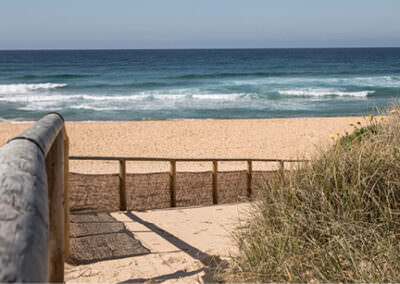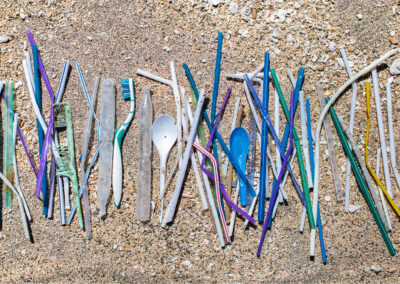
Waterways: clean-up
Time Allocation: 40 minutes*
Activity Level: Complex
Introduction
Junior Landcarers on their own or working as a team, can clean-up waterway to make a visible difference and help improve ecosystems. From picking up rubbish to collecting and analysing data, they can identify the ways people can help reduce waste and protect water supplies.
Adequate preparation of materials beforehand is important and safety instructions are essential. Please refer to the educator notes for a comprehensive list of safety and planning considerations, as well as materials to gather before commencing your waterways clean-up and data collection.
*Time allocation will be dependent on site selection and travel time.
Checklist
Instructions
 Step 1
Step 1
Living things rely on water for their survival. In parts of the country, the health of our waterways is threatened due to human impacts such as irrigation practices, climate change and pollution.
This learning activity has two major benefits, cleaning land adjacent to our precious waterways, and collecting authentic valuable data on the health of our beaches and inland waterways.
Predict what items of waste the children believe they will be collecting during their clean-up.
 Step 2
Step 2
Examine the map of the clean-up area ensuring safety aspects have been accounted for. Refer to the Educator Notes for this learning activity for a comprehensive list of safety and planning considerations.
Outline safety aspects to the children and provide a safety briefing.
- Instruct how to use the tongs or claw pick properly and how to place the rubbish in their bags safely
- Pair the children or place them in small groups to clean-up
- Ensure an adult is supervising at all times and in close proximity.
Encourage the participants to enjoy their natural surroundings as they clean up. After all, keeping beaches and waterways clean helps protect wildlife, improve their habit and restore the beauty of the waterways.
 Step 3
Step 3
Once the children have finished collecting rubbish for the allocated time frame, gather the children together with their bags of rubbish.
Carefully, tip the bags of rubbish onto large tarps for sorting and analysis.
Use these subheadings to sort the rubbish on the tarps:
- Plastic
- Polystyrene
- Glass and ceramic
- Other materials
- Cloth
- Metal
- Paper & cardboard
- Rubber
- Wood
- Additional items.
Sorting the rubbish will also assist with correct disposal of the waste.
Observe the rubbish items collected, is this what the children predicted to find?
 Step 4
Step 4
It is now time to tally and record the rubbish collected. There are two data collection options:
Paper data collection
Use the Tangaroa Blue Clean-up Data Collection Sheet to tally and note the rubbish items collected.
OR
Digital data collection
This data can also be directly entered via the AMDI app on both Android and Apple platforms.
Once data is collected, waste items need to be grouped for correct disposal, e.g. organics, recyclables, repurposing etc.
It is now time to correctly dispose of the waste.
Make sure recyclables are correctly processed. Contact your local council for further information.
Use the activity sheet to help analyse what you have collected and discuss together what actions you might take next.
Extension Activity
Explore Aboriginal and Torres Strait Islander Peoples’ connections with, and valuing of, water and water resource management.
Research natural water sources in Australia that have been listed as either World Heritage sites or national parks for their aesthetic, environmental or cultural value.
Contact your local Coastcare Facilitator to see how you can become involved. Community volunteer groups help to maintain our marine and coastal environment through activities such as revegetating coastal areas, building boardwalks, fencing, building tracks, monitoring native shorebirds and other animals, presenting education and awareness raising community meetings, planting and weeding, landscaping coastal areas and protecting cultural sites.